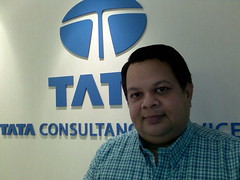 Image by markhillary via Flickr
Image by markhillary via Flickr
2. Explain normalization with examples.
3. What cursor type do you use to retrieve multiple
record sets?
4. Difference between a "where" clause and a "having"
clause
5. What is the difference between "procedure" and
"function"?
6. How will you copy the structure of a table without
copying the data?
7. How to find out the database name from SQL*PLUS
command prompt?
8. Tradeoffs with having indexes
9. Talk about "Exception Handling" in PL/SQL?
10. What is the difference between "NULL in C" and
"NULL in Oracle?"
11. What is Pro*C? What is OCI?
12. Give some examples of Analytical functions.
13. What is the difference between "translate" and
"replace"?
14. What is DYNAMIC SQL method 4?
15. How to remove duplicate records from a table?
16. What is the use of Analyzing the tables?
17. How to run SQL script from a Unix Shell?
18. What is a "transaction"? Why are they necessary?
19. Explain Normalization dn De normalization with
examples.
20. When do you get constraint violation? What are the
types of constraints?
21. How to convert RAW data type into TEXT?
22. Difference - Primary Key and Aggregate Key
23. How functional dependency is related to database
table design?
24. What is a "trigger"?
25. Why can a "group by" or "order by" clause be
expensive to process?
26. What are "HINTS"? What is "index covering" of a
query?
27. What is a VIEW? How to get script for a view?
28. What are the Large object types supported by
Oracle?
29. What is SQL*Loader?
30. Difference between "VARCHAR" and "VARCHAR2"
data types.
31. What is the difference among "dropping a table",
"truncating a table" and "deleting all records" from a
table.
32. Difference between "ORACLE" and "MICROSOFT ACCESS"
databases.
33. How to create a database link ?
![Reblog this post [with Zemanta]](http://img.zemanta.com/reblog_e.png?x-id=38975a48-53d1-42a9-9ca1-9f28ee6c6139)
0 comments:
Post a Comment